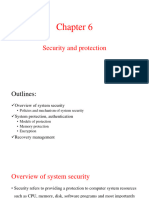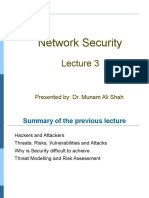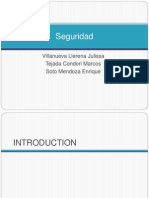0% found this document useful (0 votes)
32 views50 pages06 - Protection - Security
The document discusses protection and security in computer systems. It covers topics like protection goals, operating system protection mechanisms, access control models, and security threats. User authentication through passwords is also explained.
Uploaded by
milton21207613Copyright
© © All Rights Reserved
We take content rights seriously. If you suspect this is your content, claim it here.
Available Formats
Download as PDF, TXT or read online on Scribd
0% found this document useful (0 votes)
32 views50 pages06 - Protection - Security
The document discusses protection and security in computer systems. It covers topics like protection goals, operating system protection mechanisms, access control models, and security threats. User authentication through passwords is also explained.
Uploaded by
milton21207613Copyright
© © All Rights Reserved
We take content rights seriously. If you suspect this is your content, claim it here.
Available Formats
Download as PDF, TXT or read online on Scribd
/ 50





























































